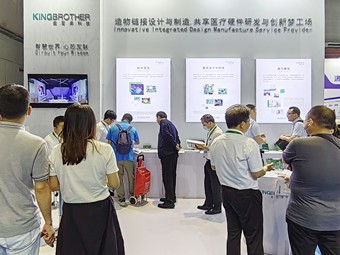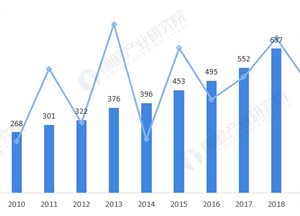问:连续周围神经阻滞可以减少幻肢痛吗?
Patient-centered results from a multicenter study of continuous peripheral nerve blocks and postamputation phantom and residual limb pain: secondary outcomes from a randomized, clinical trial.
以患者为中心的连续周围神经阻滞和截肢后幻肢痛和残肢痛多中心研究的结果:随机临床试验的次要结果
论文摘要
Introduction We previously reported that a 6-day continuous peripheral nerve block reduces established postamputation phantom pain. To provide patients and providers with the information to best inform treatment decisions, here we reanalyze the data and present the results in a more patient-centered format. We also provide information on patient-defined clinically relevant benefits to facilitate evaluation of available studies and guide future trial design.
我们之前报道过,连续 6 天的周围神经阻滞可减少已发生的截肢后幻肢痛。为了向患者和提供治疗者最好的治疗决策信息,我们在这里重新分析数据并更加以患者为中心的格式呈现结果。我们还提供有关患者定义的临床相关益处的信息,以促进现有研究的评估并指导未来的试验设计。
Methods The original trial enrolled participants with a limb amputation and phantom pain who were randomized to receive a 6-day continuous peripheral nerve block(s) of either ropivacaine (n=71) or saline (n=73) in a double-masked fashion. Here we calculate the percentage of each treatment group that experienced a clinically relevant improvement as defined by previous studies as well as present what the participants of our study defined as small, medium, and large analgesic improvements using the 7-point ordinal Patient Global Impression of Change(PGIC) [1-2] scale.
最初的试验招募了患有肢体截肢和幻肢痛的参与者,他们被随机分配接受为期 6 天的连续外周神经阻滞,其中包括罗哌卡因 (n=71) 或生理盐水 (n=73),以双盲方式进行。在这里,我们计算了每个治疗组中经历了先前研究所定义的临床相关改善的百分比,并使用患者整体印象变化量表(PGIC)呈现了我们研究的参与者所定义的小、中和大镇痛改善。
Results Among patients who were given a 6-day ropivacaine infusion, 57% experienced at least a 2-point improvement on the 11-point numeric rating scale in their average and worst phantom pain 4weeks postbaseline as compared with 26% (p<0.001) for average and 25% (p<0.001) for worst pain in patients given a placebo infusion. At 4weeks, the percentage of participants rating their pain as improved was 53% for the active vs 30% for the placebo groups (95% CI 1.7 (1.1, 2.7), p=0.008). 在接受 6 天罗哌卡因输注的患者中,基线后 4 周,57% 的患者在 11 点数字评分量表上的平均疼痛和最严重幻肢痛至少改善了 2 分,而接受安慰剂输注的患者中,平均疼痛和最严重幻痛分别为 26% (p<0.001) 和 25% (p<0.001)。第 4 周时,认为罗哌卡因组疼痛有所改善的参与者比例为 53%,而安慰剂组为 30%(95% CI 1.7 (1.1, 2.7),p=0.008)
For all patients combined, the median (IQR) phantom pain Numeric Rating Scale improvements at 4weeks considered small, medium, and large were 2 (0–2), 3 (2– 5), and 5 (3–7), respectively. The median improvements in the Brief Pain Inventory interference subscale (0–70) associated with small, medium, and large analgesic changes were 8 (1–18), 22 (14–31), and 39 (26–47).
对于所有患者,4 周时幻肢痛数字评定量表改善的中位数 (IQR) 小、中、大分别为 2 (0-2)、3 (2-5) 和 5 (3-7)。与小、中、大镇痛改变相关的简短疼痛量表干扰量表 (0-70) 的中位改善分别为 8 (1-18)、22 (14-31) 和 39 (26-47)。
Conclusions Among patients with postamputation phantom pain, a continuous peripheral nerve block more than doubles the chance of a clinically relevant improvement in pain intensity. Amputees with phantom and/or residual limb pain rate analgesic improvements as clinically relevant similarly to other chronic pain etiologies, although their smallest relevant improvement in the Brief Pain Inventory was significantly larger than previously published values.
在截肢后幻肢痛患者中,持续周围神经阻滞使临床相关疼痛强度改善的机会增加一倍以上。患有幻肢痛和/或残肢痛的截肢者的镇痛改善与其他慢性疼痛病因类似,具有临床相关性,尽管他们在短暂疼痛量表中的最小相关改善明显大于之前公布的值。
结果展示
1. Among patients with any phantom pain at baseline who were given a 6-day ropivacaine infusion, 57% experienced at least a 2-point improvement on the 11-point numeric rating scale in their average and worst phantom pain 4weeks postbaseline as compared with 26% for average (relative risk (95%CI) of 1.6 (1.2, 2.1), p<0.001) and 25% for worst pain (relative risk (95%CI) of 1.8 (1.3, 2.7), p<0.001) in patients given a placebo infusion (figure 2).
Overall, active patients were an estimated 2 (95% CI 1.4, 4) times more likely to have a better change in average residual limb pain from baseline compared with placebo.
在基线时出现幻肢痛并给予 6 天罗哌卡因输注的患者中,57% 的患者在基线后 4 周的平均幻痛和最严重幻痛的 11 点数字评分量表上至少改善 2 分,而平均水平(相对风险 (95% CI) 为 1.6 (1.2, 2.1),p<0.001)为 26%,最严重疼痛为 25%(相对风险 (95% CI) 为 1.6 (1.2, 2.1),p<0.001)。
总体而言,与安慰剂相比,活跃患者的平均残肢疼痛较基线改善的可能性估计高出 2 倍(95% CI 1.4, 4)。

数据表示为中值(深色水平条),带有 IQR(IQR,Q1 至 Q3)(框),最大值和 Q3+1.5×IQR 之间的最小值以及最小值和 Q1−1.5×IQR 之间的最大值(胡须)。散点代表数据点。气泡上的数字代表治疗组内每个类别的百分比,基线时无疼痛的患者(紫色)除外,它表示受试者的实际数量。气泡的大小与百分比/数量成正比。两张图均按改善程度进行颜色编码:无改善(红色)、改善(橙色)和临床相关改善(绿色)。
2. The percentage of patients experiencing a clinically relevant improvement in phantom and residual limb pain varied by their baseline pain intensity (tables 1 and 2). Patients beginning with severe pain (NRS >7) did not improve with active treatment versus placebo to the same degree as did participants with mild or moderate pain at baseline
幻肢痛和残肢痛出现临床相关改善的患者百分比因基线疼痛强度而异(表 1 和表 2)。与安慰剂相比,开始出现严重疼痛(NRS > 7)的患者在积极治疗后的改善程度与基线时轻度或中度疼痛的参与者的改善程度不同。


3. Based on the PGIC at 4 weeks, the percentage of participants rating their pain as improved was 53% for the active vs 30% for the placebo groups (95% CI 1.7 (1.1 to 2.7), p=0.008). This indicates an individual was 74% more likely to experience self-described improvement in the active compared with the placebo group. The mean (SD) average phantom pain NRS improvements considered small, medium, and large by patients were 0.9 (1.9), 3 (1.8), and 5 (2.0), respectively (table 3). The corresponding median (IQR) were 2 (0–2), 3 (2–5), and 5 (3–7).
4 周时的 PGIC,认为活性药物组疼痛有所改善的参与者百分比为 53%,而安慰剂组为 30%(95% CI 1.7(1.1 至 2.7),p=0.008)。这表明,与安慰剂组相比,个体在服用活性药物后出现自我描述的改善的可能性要高

出 74%。患者认为小、中、大的幻痛 NRS 平均 (SD) 平均改善分别为 0.9 (1.9)、3 (1.8) 和 5 (2.0)(表 3)。相应的中位数 (IQR) 为 2 (0–2)、3 (2–5) 和 5 (3–7).
References
[1] Farrar JT, Young JP Jr, LaMoreaux L, Werth JL, Poole MR. Clinical importance of changes in chronic pain intensity measured on an 11-point numerical pain rating scale. Pain. 2001. 94(2): 149-158.
[2] Salaffi F, Stancati A, Silvestri CA, Ciapetti A, Grassi W. Minimal clinically important changes in chronic musculoskeletal pain intensity measured on a numerical rating scale. Eur J Pain. 2004. 8(4): 283-91.
文章:差劲先生
排版:肉肉
原文标题 : 问:连续周围神经阻滞可以减少幻肢痛吗?

图片新闻
技术文库
最新活动更多
-
7.30-8.1火热报名中>> 全数会2025(第六届)机器人及智能工厂展
-
7月30-31日报名参会>>> 全数会2025中国激光产业高质量发展峰会
-
精彩回顾立即查看>> 【线下论坛】新唐科技2025新品发布会
-
精彩回顾立即查看>> 【在线会议】研华嵌入式核心优势,以Edge AI驱动机器视觉升级
-
精彩回顾立即查看>> OFweek 2025(第十四届)中国机器人产业大会
-
精彩回顾立即查看>> 【在线会议】从直流到高频,材料电特性参数的全面表征与测量







 分享
分享












发表评论
请输入评论内容...
请输入评论/评论长度6~500个字
暂无评论
暂无评论